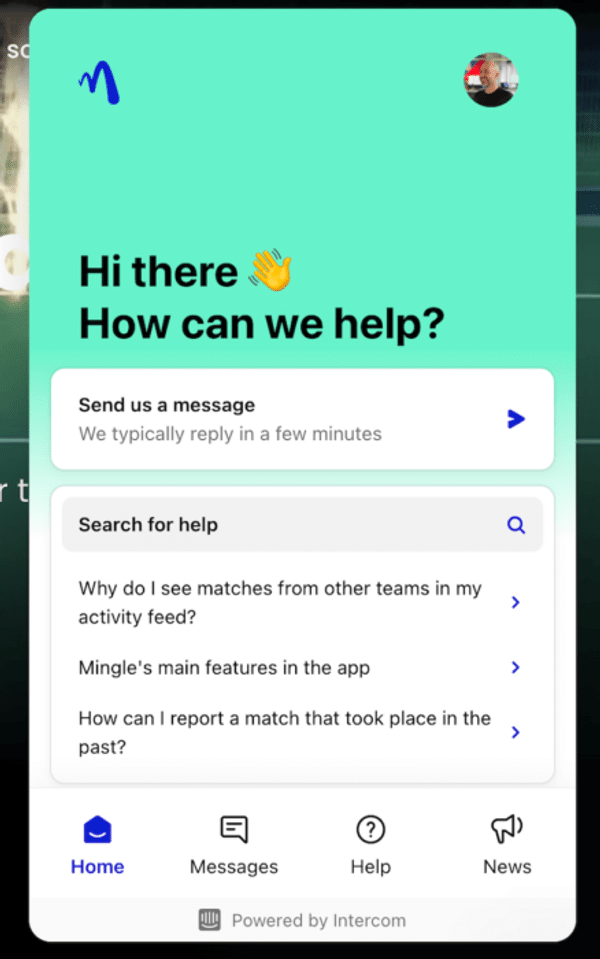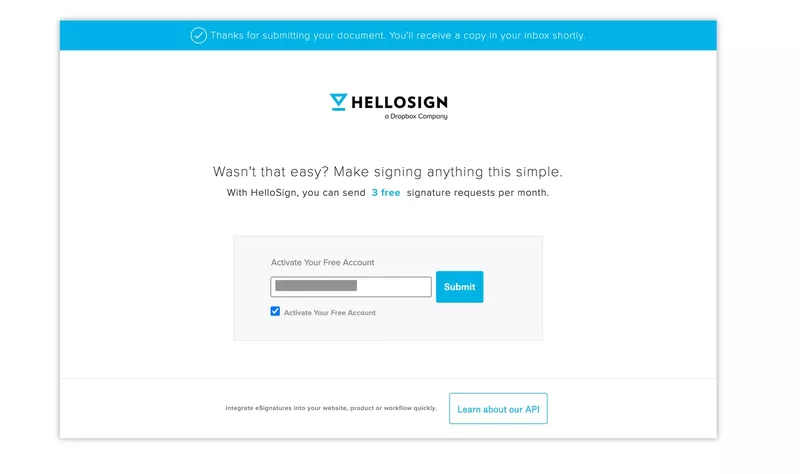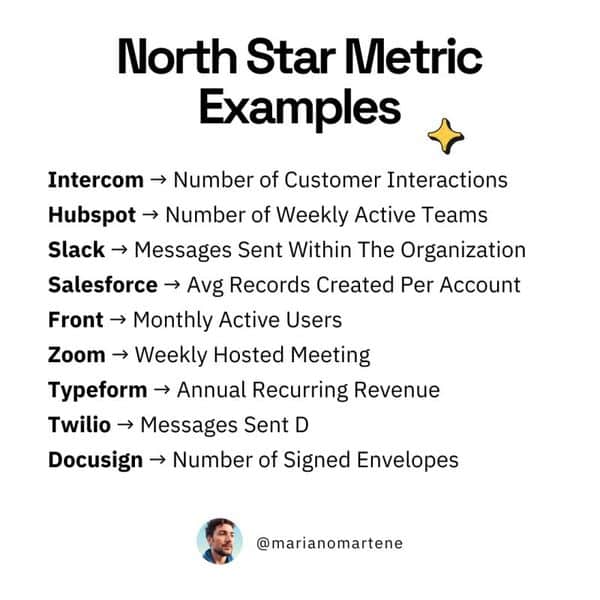Are you intrigued to leverage the power of word-of-mouth for your SaaS business? Thinking about how to encourage your existing customers to refer your services to others? 🤩
Presenting an in-depth guide dedicated to helping you master the art of referral using the AARRR Pirate Framework! In this article, we’ll explore 12 robust referral tactics that could skyrocket the growth of your SaaS business ⚡️.
Referrals are a potent and cost-effective way to reach more potential customers, and they come with the added advantage of trust associated with personal recommendations. Ready to amplify your user base at an exponential pace? Our piece, abounding in practical insights, well-researched strategies, and real-world examples can be your ultimate guide! 🚀
Join us as we journey through these influential tactics and bring you one step closer to making your product the talk-of-the-town!
#1 Add “Powered by” Badge

MailChimp and Typeform, both displays their logos on free mails sent from their free users. Intercom and Crisp add a link on their chatbots (check image). They do it with the knowledge bases too!. This way they get a backlink from your SaaS for free, and you can do the same.
👉 Embeds, such as these badges, can be placed in various locations like widgets on websites, invoicing footers, emails, and surveys.
#2 Ask Referral Request via Email
Leverage the power of your existing customer base by sending them an email specifically asking for a friendl referrals.
Studies indicate that customers acquired through referrals tend to be more loyal and profitable. (Do ask for a intro!) Consider offering incentives or rewards to both the referrer and the referred to encourage participation.
#3 Be a podcasts guest before starting your own podcast
Gain experience, credibility, and a potential audience by guesting on established podcasts before launching your own. Being a guest allows you to understand the dynamics of podcasting without the pressure of hosting.
• Audience Building: Appearing on established podcasts gives you access to their listeners.
• Credibility & Networking: Being a podcast guest can position you as an authority in your field. It also allows you to network with podcast hosts and other influential figures in the industry.
• Feedback & Refinement: Use the feedback from your guest appearances to refine your messaging, presentation style, and content ideas for your own podcast.
Start by identifying podcasts that align with your expertise and target audience. Craft a compelling pitch highlighting the unique insights you can offer and reach out to the hosts.
🔗 How to get Interviewed on podcasts
#4 Be closer to your customers
Have at least 1 call per week with customers and potential customers. With every call, you will learn (about pains, feature requests, marketing messaging, etc.). You can also build a customer advocacy program to turn your most influential customers into brand ambassadors.
👉 Here is a great guide about customer advocacy programs. If you just starting out with your business (or expanding to new markets) build a launching partner program. It’s basically a group of early customers and they provide you with insights, and regular reviews of the roadmap & help you to grow your brand in the industry, make intros and referrals, etc. In exchange, you can offer them special conditions
#5 Build virality features in your product
Integrate viral features into your product to encourage users to share:
• Network Effects: The product’s value increases with more users. Examples include social media platforms like LinkedIn, chat apps like WhatsApp, and peer-to-peer payment systems like PayPal. If you a platform or marketplace you can leverage network effects.
• Value Virality: Users promote your product by merely using it. Examples include e-signature tools like Docusign, collaboration boards like Miro, and email services like Mailchimp, often combined with a ‘powered by’ badge.
• Exposure Virality: Users showcase your product to elevate their social status. Examples include NFTs like Cryptopunks and educational badges from platforms like Hubspot Academy.
• Invites & Referrals: Users are incentivized to invite others to your product, often through rewards like discount codes or free usage. Examples include Dropbox offering free storage and Uber providing free rides for referrals.
#6 Create Referral Program
Consider offering an affiliate program (everyone can refer new customers, e.g. content creators, consultants, etc.) 👉 Check out tools like Reditus, growsurf, partnerstack, to run referral and affiliate programs.
#7 Implement viral loops to drive potential users to your app

A growth loop is a self-reinforcing cycle where every user action leads to an output, which in turn generates more inputs for the next cycle, driving continuous growth.
• Three Main Components:
◦ Input: The initial trigger or action, such as a user signing up.
◦ Action: The main activity or behavior you want the user to take, like referring others.
◦ Output: The result of the action, which becomes the input for the next cycle, e.g., new user sign-ups from referrals.
✅ Acquisition growth loops, especially those based on referral programs, can be a cost-effective strategy for attracting potential users.
#8 Leverage partnerships and integrations as a form of social proof to boost product credibility.
Showcasing collaborations with major industry players can enhance trust and highlight the value of your product. Actionable Steps:
1. Highlight major integrations on your landing page.
2. Consider a dedicated integrations page for detailed info.
3. Share success stories or testimonials related to integrations.
4. Regularly update your list of integrations.
5. Engage in joint marketing efforts with partners.
#9 Revamp your (2-sided) referral program
What’s important about a referral marketing program:
1. Customer segmentation: Track your customers’ NPS score and product usage and only target your happy customers
2. Timing & frequency: Ask your customers for referrals at the right time (not straight after the signup, give them some time to experience your product and become happy customers). Think about triggers in your customer journey where customers are happy with your product and willing to refer your product.
3. Referral incentive: What is the referral bonus (cash vs. free product usage vs. other perks) and who gets the bonus when? Make sure it’s transparent and use a two-sided referral program and incentivize both parties (the referrer and the referred).
4. Communication & messaging: Figure out the right messaging and best channels (in-product, email, phone…) to ask for referrals; create rules on when (triggers) and how often you ask for referrals
5. Technical Set-Up: Check out tools like growsurf, partnerstack, or reditus to run referral and affiliate programs.
#10 Set a North Star Metric

Try to focus on what really matters. A great tool is to make use of a North star metric and to set goals (e.g. with the OKR framework).
👉 Check Alex’s examples of north star metrics.
👉 Check Mariano’s examples of north star metrics.
#11 Test indirect channels – Partnerships
Identify 5 potential partners (who sell complimentary services/products to the same target audience) and do a co-promotion deal / ideally a long-term partnership.
#12 Use your Promoters (NPS) to get fantastic reviews or ask for referrals
Measuring NPS is cool. But it’s better when you identify your promoters and put word-of-mouth marketing in action :
Run NPS score and for those who rated +8 (Your promotoers) go and:
→ Ask for reviews for you or review sites (G2, Capterra, Trustpilot, etc)
→ Ask for referrals
→ Give them access to beta features
→ Ask them to participate in a case study
Conclusion
As we bring our comprehensive journey through 12 referral tactics to a close, let’s rekindle the salient points to remember.
Referrals, a powerful and cost-effective marketing strategy, can help you scale your user base at an unprecedented speed, especially when boosted with the proven tactics discussed here. Satisfied customers are your brand ambassadors, let them bring in a loyal tribe for your business.
What’s stopping you from implementing these growth strategies and letting the word-of-mouth work its magic for your SaaS business?
To fuel your quest for growth, we’re excited to share this exclusive resource: “30 Days of Growth“. Take full advantage of this bundle for an unbounded growth journey!🎯
